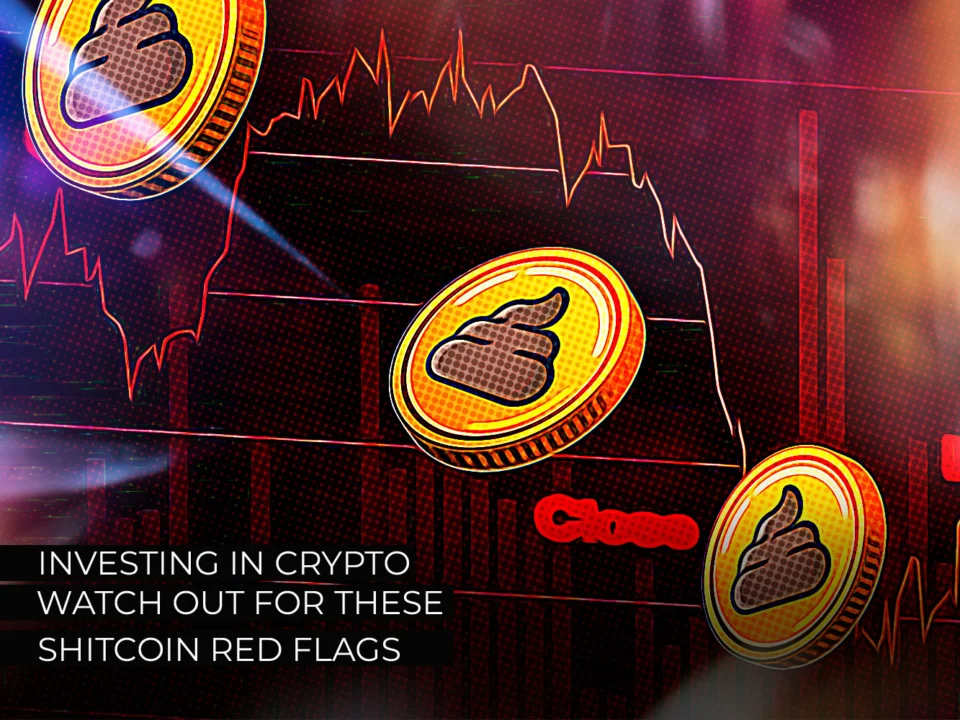Investing in crypto can be rewarding, but it also comes with its risks. One of the biggest dangers is falling into the trap of shitcoins, which are low-value, frequently fraudulent cryptocurrencies. Understanding what shitcoins are and recognizing their red flags can significantly safeguard your investments. By doing your due diligence and learning the common warning signs, you can navigate the volatile crypto market with more confidence and security.
Understanding Shitcoins: What Are They?

In the world of Crypto, not all digital currencies hold equal value or promise. Shitcoins is a term often used to describe cryptocurrencies with little to no discernible worth or utility. Unlike prominent or well-established cryptos such as Bitcoin and Ethereum, shitcoins lack robust development frameworks and substantial user bases.
Characteristics of Shitcoins:
- Lack of Transparency: Shitcoin projects often hide critical information about their team, technology, and roadmap.
- Poor Utility: They usually serve no significant purpose or fail to present innovative solutions.
- Low Market Capitalization: Shitcoins tend to have low market values, making them highly volatile.
- Short Lifespan: Many shitcoins burst into the market and disappear just as quickly, leaving investors with losses.
Due to these characteristics, shitcoins pose a risky bet for anyone venturing into Crypto investments. Knowing how to differentiate between valuable cryptocurrencies and shitcoins is crucial for protecting your financial assets.
Common Shitcoin Red Flags to Look For
When diving into the volatile world of Crypto, it’s crucial to identify shitcoin red flags. Recognizing these indicators helps you avoid potentially disastrous investments.
1. Lack of Transparency
- Shitcoins often have anonymous or dubious team members.
- Legitimate Crypto projects openly share their development team and advisors.
2. No Clear Use Case
- Legit projects solve problems or provide unique benefits.
- Shitcoins often lack a definitive purpose or utility.
3. Excessive Hype with No Substance
- Watch out for projects heavily marketed without any substantial work or product.
- Genuine Crypto projects provide a tangible roadmap and clear milestones.
4. Poorly Written Whitepapers
- Scams usually feature whitepapers filled with technical jargon but lack detailed plans.
- A well-thought-out Crypto whitepaper is clear, logical, and meticulously detailed.
5. Extremely High Circulating Supply
- Projects with billions or trillions of tokens often dilute value, making it hard to gain substantial returns.
- Compare token supply and potential market cap when evaluating investments.
6. Unrealistic Promises
- Be wary of extraordinary claims like guaranteed returns or risk-free investments.
- Legitimate Crypto projects emphasize potential risks and rewards transparently.
Comparison Table: Genuine vs. Shitcoin Indicators
| Indicator | Genuine Crypto | Shitcoin |
|---|---|---|
| Team Transparency | Public, credible members | Anonymous, unverified members |
| Use Case | Clear and practical | Vague or non-existent |
| Marketing | Balanced with development progress | Overhyped, underdelivered |
| Whitepaper | Detailed and logical | Filled with fluff |
| Token Supply | Reasonable | Excessively high |
| Promises | Transparent and realistic | Unrealistic and exaggerated |
By watching out for these red flags, you can better navigate the risky waters of Crypto investments and make informed choices.
How to Safeguard Your Investments from Shitcoins
Navigating the volatile world of crypto can be daunting, especially with the presence of countless shitcoins. Here are some practical tips to help you safeguard your investments:
Conduct Thorough Research
Before putting your money into any crypto asset, investigate its background:- Team: Check the credibility of the team behind the project.
- Whitepaper: Read the whitepaper to understand the project’s purpose and roadmap.
- Community: Active and engaged communities often indicate a more reliable project.
Evaluate the Use Case
Not all cryptocurrencies serve a useful purpose. Compare the functionality of the crypto:- Utility: Does it solve a real-world problem or just hype?
- Adoption: Look for actual use cases and partnerships.
Assess Market Activity
Monitor the trading volume and market cap:- Liquidity: Cryptos with higher liquidity are generally safer.
- Exchange Listings: Established exchanges listing the crypto adds a layer of trust.
Diversification
Do not put all your funds into one project. Spread your investments across various stable and high-potential projects to minimize risk.
By keeping these strategies in mind, you can better protect your crypto investments from falling prey to shitcoins.
Frequently Asked Questions
What is a ‘shitcoin’ and why should I be cautious?
A ‘shitcoin’ refers to a cryptocurrency with little to no value or immediate use. Often created as a means to capitalize on the cryptocurrency boom, these coins typically lack a strong development team, concrete utility, or a substantial community backing them. It’s essential to be cautious because investing in shitcoins can result in significant financial losses, especially if the coin was created with the intention of scamming investors.
How can I identify if a cryptocurrency is a potential shitcoin?
Identifying a potential shitcoin involves looking for several red flags. These may include a lack of transparency about the development team, an overly ambitious whitepaper without a realistic roadmap, or a marketing strategy that relies heavily on hype rather than substantial utility. Additionally, shitcoins often have low trading volumes and can be found predominantly on lesser-known exchanges.
Are there specific characteristics in a whitepaper that suggest a cryptocurrency might be a shitcoin?
Yes, a whitepaper can reveal a lot about the credibility of a cryptocurrency. Red flags include vague terminology, unrealistic promises of high returns, and an absence of a clear, achievable roadmap. If the whitepaper does not provide detailed information about the technology, use case, and the development team, it’s a strong indicator that the cryptocurrency might be a shitcoin.
What role does the community and social media presence play in detecting a shitcoin?
The community and social media presence of a cryptocurrency are critical in determining its legitimacy. A genuine project typically has an engaged and active community discussing the project openly. In contrast, shitcoins often rely on artificial hype, with paid promotions, fake endorsements, or sudden surges in social media activity without solid news or updates. Be wary of cryptocurrencies that focus more on marketing tactics rather than delivering a functional product.







